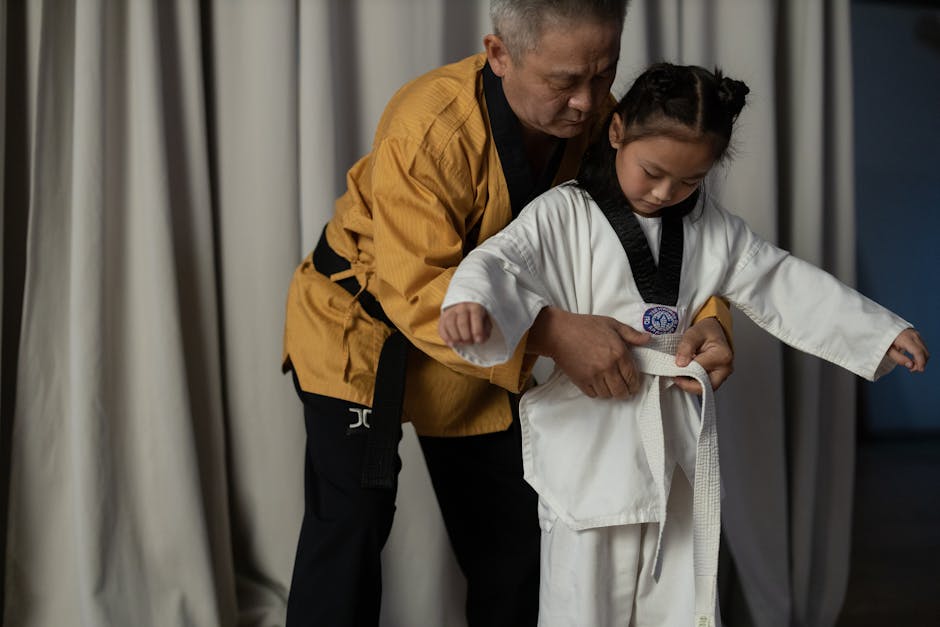Understanding Martial Arts Weapons
Martial arts weapons are an integral part of many traditional and modern martial arts practices. Understanding the different types of weapons used in martial arts, from swords to staffs, can provide insight into the rich history and diversity of these ancient practices.
The design and purpose of each martial arts weapon vary significantly, with some weapons emphasizing speed and precision, while others focus on power and defense. By delving into the specifics of each weapon, practitioners can appreciate the artistry and skill required to wield them effectively.
Training with martial arts weapons also promotes discipline and concentration, as practitioners must master not only the physical techniques but also the mental focus required to use these tools safely and effectively. Respect for the weapons and their traditions is a fundamental aspect of training in martial arts.
Whether it’s a graceful katana or a versatile nunchaku, each martial arts weapon has its unique characteristics and challenges. Developing a deep understanding of these weapons can enhance a practitioner’s overall martial arts experience, fostering growth and proficiency in their chosen discipline.
Safety Precautions Before Handling
Before handling martial arts weapons, it is crucial to prioritize safety above all else. This starts with proper training and guidance from qualified instructors who can teach the fundamental principles of weapon handling with an emphasis on safety protocols.
Always inspect the weapon before use to ensure it is in good condition without any visible defects or damage. Proper maintenance and care of the weapons are essential to prevent accidents during training or demonstrations.
Individuals should also familiarize themselves with the specific safety guidelines related to each type of martial arts weapon they are using. Different weapons may require unique precautions based on their design and intended use.
Moreover, wearing appropriate safety gear, such as gloves, goggles, or padding, can provide an added layer of protection during weapon practice. Being mindful of one’s surroundings and maintaining focus can further reduce the risk of injury while handling martial arts weapons.
Lastly, it is crucial to practice in a safe and controlled environment under the supervision of experienced instructors who can offer guidance and support. Following these safety precautions diligently can help prevent accidents and ensure a positive and rewarding martial arts training experience.
Proper Techniques for Handling Weapons
When it comes to handling martial arts weapons, mastering proper techniques is essential for both safety and effectiveness. Beginners should start with basic movements and grips to develop control and coordination before advancing to more complex techniques.
Proper stance and posture play a crucial role in weapon handling, as they provide stability and power during strikes and blocks. Practitioners should focus on maintaining a balanced and centered position to execute techniques with precision and fluidity.
Understanding the biomechanics of each weapon is key to using it efficiently. Different weapons require specific movements and angles to generate maximum force or speed. Training drills and repetitions are essential to internalize these techniques and build muscle memory.
Additionally, practitioners should practice control and restraint when handling weapons to avoid unintended injuries. Slow, deliberate movements can help refine technique and build confidence before progressing to faster-paced and more dynamic training scenarios.
Consistent practice and dedication are vital for honing weapon skills over time. By focusing on proper techniques, individuals can not only improve their martial arts proficiency but also reduce the risk of accidents while handling weapons in training or performance settings.
Safety Gear and Equipment
Having the right safety gear and equipment is essential for protecting oneself during martial arts weapon training. Protective items such as headgear, body armor, and shin guards can minimize the risk of injuries from accidental impacts or strikes.
Quality safety gear should be properly fitted and in good condition to provide the best possible protection. Regular inspections and maintenance of safety equipment are necessary to ensure their effectiveness and integrity during training sessions.
In addition to personal protective gear, training environments should be equipped with safety measures such as padded flooring, clear practice areas, and emergency response protocols. These precautions create a secure training environment for practitioners of all levels.
Furthermore, individuals should follow the guidelines set by their martial arts school or instructor regarding the use of safety equipment. Understanding how each piece of gear functions and when to use it can significantly enhance the overall safety and quality of training sessions.
Remember, safety gear is not just about protection; it also instills confidence and peace of mind, allowing practitioners to focus on refining their skills without unnecessary worry. Investing in quality safety gear is an investment in one’s well-being and long-term enjoyment of martial arts training.

